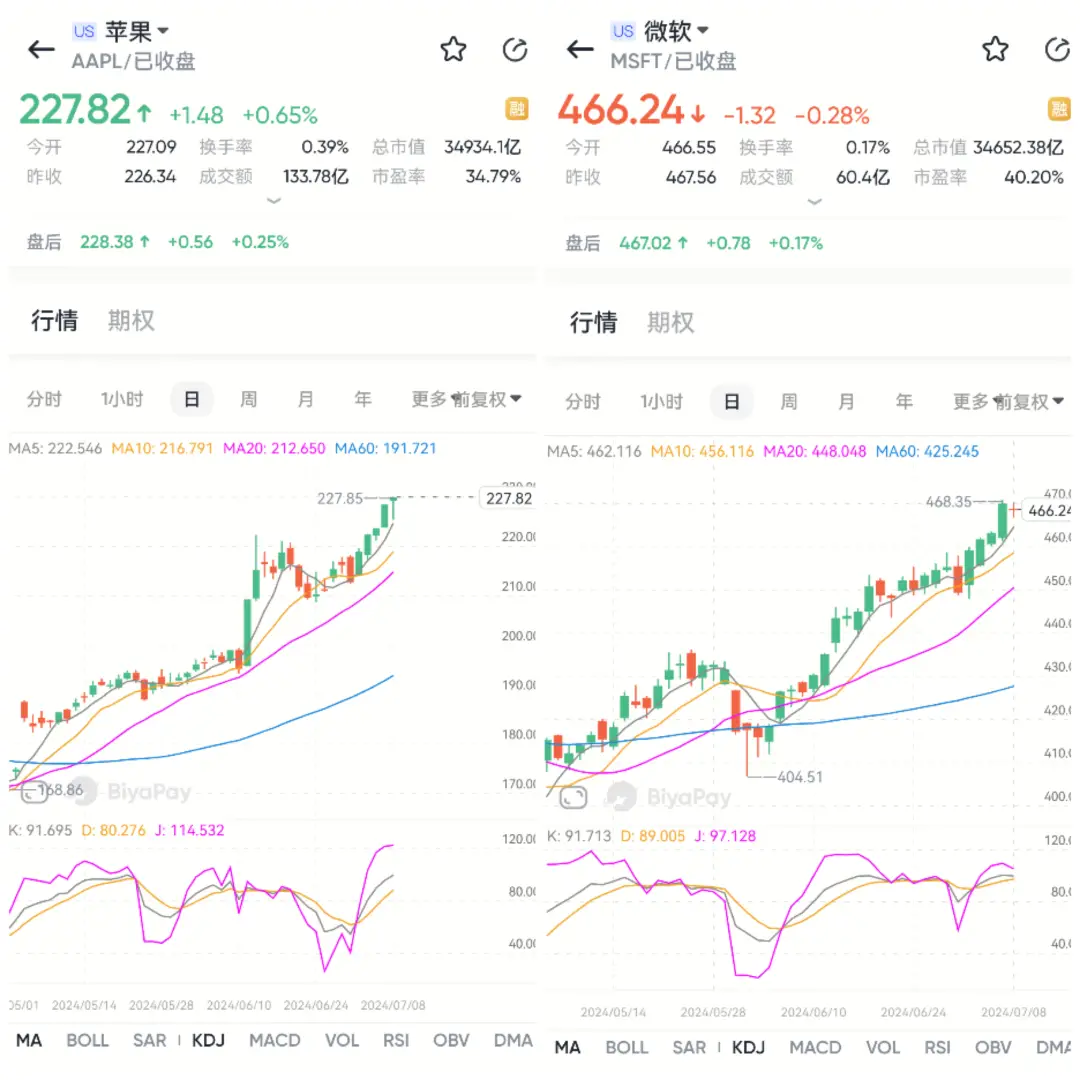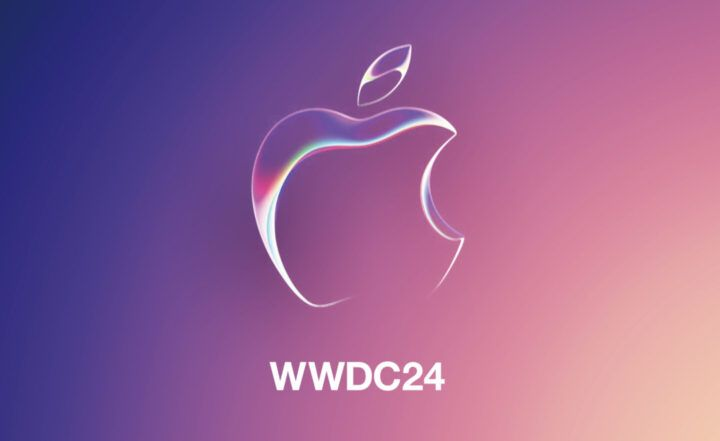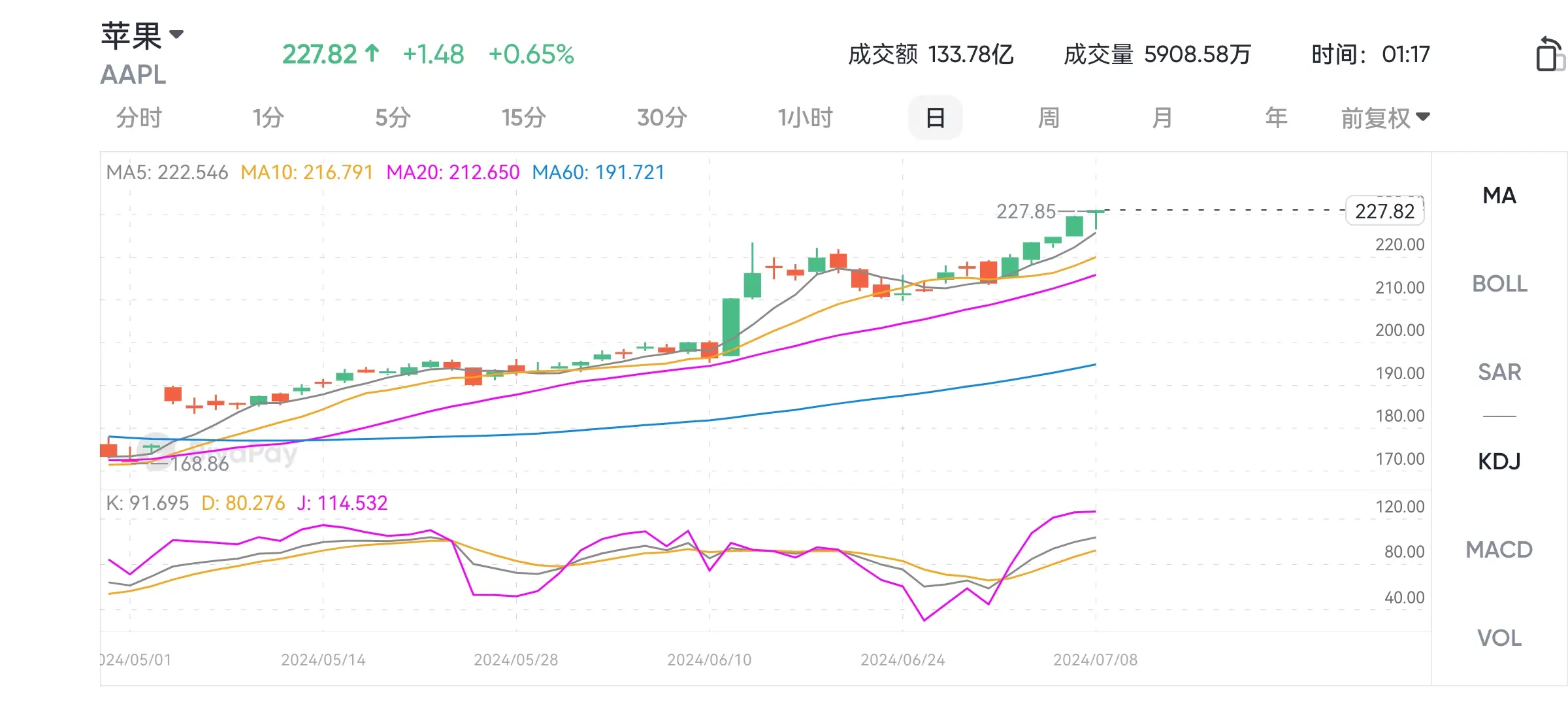- Remittance
- Exchange Rate
- Stock
- Events
- EasyCard
- More
- Download
Apple's market value has returned to its peak, and these are the driving forces behind the rise in s
On July 8th, Eastern Time, Apple rose 0.65%, rising for the fifth consecutive trading day, with a market value approaching $3.50 trillion, setting a closing record, surpassing Microsoft to return to the first place, marking the rise of this Silicon Valley giant again.

The direct driving force behind this market value increase is the adjustment of the iPhone 16 series stocking target and the technological innovation demonstrated at the 2024 Apple Developer Conference. Next, let’s take a closer look at the specific driving forces behind this market value increase.
Why did Apple’s market value rise?
iPhone 16 series of marketing strategies

Upgrade of stocking target
On July 8th, 2024, news came from deep within the Apple supply chain that Apple has raised the stocking target for its iPhone 16 series from the original 85 million department to 90 million department. This adjustment is based on positive predictions of market response and confidence in the market acceptance of new technologies.
In addition, the increase in the number of foundry orders for the A18 chip indicates that Apple is optimistic about the performance improvement of the new generation of iPhone. Analysts pointed out that this performance improvement is achieved through improved processing power and more efficient energy management, which is expected to attract more technology enthusiasts and professional users, which will also create more revenue for Apple.
Marketing activities and positioning
Apple’s marketing activities continue to focus on the premium image of its brand, highlighting the innovative features of the iPhone 16, such as an upgraded camera system, longer battery life, and new operating system features. These features not only enhance the attractiveness of the product, but also strengthen Apple’s leading position in the high-end smartphone market.
Technological innovation and product development
Apple has always focused on technological innovation, committed to product improvement, and constantly enhancing its competitiveness. The iPhone 16 series mentioned above comes with 8GB of memory as standard to meet higher data processing requirements. This upgrade enables the new iPhone to run complex Machine Learning algorithms more efficiently, providing advanced features such as real-time image processing and automatic speech recognition.

Not long ago, at the 2024 Apple Developer Conference, the company launched a series of remarkable innovative achievements, among which the comprehensive improvement of Apple’s Speech and Audio assistant Siri’s capabilities was particularly noteworthy.
The new generation of Siri can handle complex natural language requests more smoothly, support a wider range of languages, and integrate more third-party apps. This not only improves the User Experience, but also expands its applications in home automation and mobile work fields.
Apple’s AI technology is only supported from the iPhone 15 Pro series, which is expected to encourage old users to upgrade their phones. It is expected that the overall shipment volume of iPhone in 2024 will be relatively stable, or only have a single-digit decline. Moreover, coupled with subsequent innovative models, it is expected to show a sustained upward trend from 2025 to 2027.
Unique competitive advantage
Despite fierce competition in the market, such as Samsung and Huawei actively promoting their own innovation, Apple’s long-standing brand influence, user loyalty, and strong research and development capabilities have always maintained a high level of attention and trust in the market. Apple’s competitive advantages are mainly reflected in the following aspects.
User privacy protection
Apple has always made user privacy one of the core features of its products and services. The company’s commitment to privacy is not only reflected in its advertisements and public statements, but also integrated into the design of its devices and operating systems. For example, Apple’s iOS operating system provides extensive privacy control options, allowing users to manage application access to their information in detail.
In addition, Apple’s App Tracking Transparency feature allows users to control the app’s ability to track their activities for advertising purposes. This feature has been widely welcomed by users and has enhanced consumer trust in the Apple brand.
Integrated ecosystem
Apple’s product ecosystem is one of its main competitive advantages, enhancing user stickiness by providing seamless experiences across devices. From Mac to iPhone, from Apple Watch to iPad, the high compatibility and integration between Apple devices provide a unique User Experience, which makes it difficult for consumers to switch to other brands once they invest in Apple’s ecosystem.
For example, through features such as AirDrop and Handoff, users can easily share files and tasks between different Apple devices, and the convenience and efficiency of these features are unmatched by other competitors.
Innovative hardware and software
Apple’s continued investment in hardware design and software innovation provides a competitive advantage for its product line. Apple’s hardware, such as iPhone camera system and MacBook’s M1 chip, reflect industry-leading technology.
At the same time, Apple’s software, such as iOS and macOS, are constantly updated to introduce new features and improvements, ensuring the superiority of User Experience. This perfect combination of hardware and software enables Apple to provide high-quality performance and User Experience, thus staying ahead in the market.
How did the market react?
The market has generally responded positively to Apple’s latest developments. The continuous rise in Apple’s stock price in recent days also shows the market’s high expectations for this series of products. In addition, investors welcome Apple’s progress in AI and Machine Learning, which are also seen as key factors driving future growth.
Most analysts are optimistic about Apple’s prospects, believing that Apple’s technological innovation and market strategy will continue to support its market value growth, and the stock price is expected to continue to rise in the future.
Overall, Apple is a good investment choice. If you are in a wait-and-see state, you can go to BiyaPay, search for stock codes on the platform, monitor market trends, and choose the right time to get on board. Of course, if you have problems with deposits and withdrawals, you can also use this platform as a professional tool for depositing and depositing US and Hong Kong stocks. Recharge digital currency to exchange for US dollars or Hong Kong dollars, withdraw to your bank account, and then deposit to other securities firms to buy stocks. The arrival speed is fast, there is no limit, and it will not delay the market.

What are the challenges of sustained growth?
As mentioned earlier, Apple is expected to achieve further growth, but there will also be some challenges in this process. The main ones are as follows:
Global supply chain issues
Apple’s products, especially its iconic iPhone, rely on global supply chains, and instability in global supply chains can affect its product production and delivery times.
This requires Apple to reduce its dependence on a single market by finding or establishing new suppliers and production facilities in different regions, using advanced forecasting tools and technologies to optimize inventory management to cope with potential supply disruptions.
The competitive pressure of technological innovation
The innovation speed in the technology industry is extremely fast, and Apple needs to continuously launch innovative products to maintain its market leadership position. Competitors such as Samsung, Huawei, and Google are actively promoting technological innovation, especially in the fields of artificial intelligence, foldable screen technology, and 5G communication.
This requires continued increases in R & D budgets, especially in future technology areas such as AI, Machine Learning, and the Internet of Things, or by acquiring cutting-edge technology companies or collaborating with other technology pioneers to quickly acquire new technologies and markets.
Market saturation and slowing growth
In some major markets, such as North America and Europe, the market for smartphones and other electronics is becoming saturated, and new user growth is slowing, making growth more dependent on device upgrade and replacement cycles.
In the future, we should continue to explore Emerging Markets and launch new products or services, such as augmented reality and personal health devices, to attract existing users to upgrade and attract new users.
Conclusion
Looking to the future, Apple’s market strategy and technological development seem to be at a new starting point. Although it still faces many challenges, with continuous investment in fields such as AI and Machine Learning, as well as a deep understanding of global market demand, Apple is expected to maintain its leading position in the technology industry. Apple’s innovation path and market strategy will continue to drive its market value growth.
Nowadays, Apple’s return to the top market value is an important sign. In the constantly changing market environment, we need to continue to pay attention to Apple’s strategies and market actions.

























